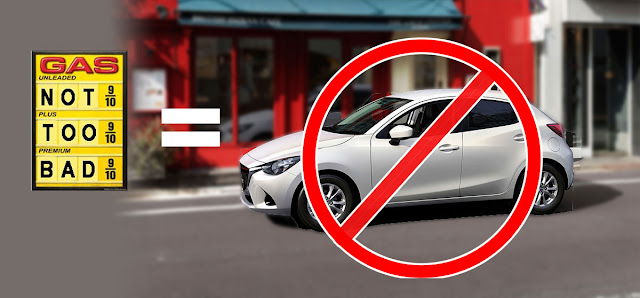Thursday, May 28, 2015
Will Lower Gas Prices and Low Profits Mean Fewer Subcompacts?
By Andy Lilienthal
We recently reported that the 2016 Mazda2 won't be coming to the U.S. as a '16 model. The reason? Low gas prices mean lower demand for small cars, and subcompact cars often don't yield the profits of their larger cousins.
According to AAA's Fuel Gauge Report, the average price for a gallon of 87 octane fuel in the USA is currently $2.73. One year ago it was $3.65, and in 2012 it was closer to $3.68 (according to eia.gov). Because of this recent trend of lower fuel prices, people are buying larger vehicles that aren't as frugal. Frankly, this shouldn't come as much of a surprise—we've seen it happen before.
And while gas prices are one thing, subcompact cars have never been money makers, at least not big money makers. Many dealers only make a couple hundred dollars of profit off of them. This is one reason why you when you go into the dealer to ask about a subcompact car, the salesperson immediately says, "But for only a little bit more money, you can get into the [INSERT LARGER CAR HERE." Do you know how many times this scenario has played out for me?
TOYOTA DEALER
ME: I'm looking for a Toyota Yaris.
DEALER: We had one on the lot about 92 weeks ago. What about a Corolla?
CHEVROLET DEALER
ME: I'm looking for a Chevrolet Spark.
DEALER:No, no no. You want a Sonic! No wait, a Cruze!
KIA DEALER
ME: I'd like to check out a Rio.
DEALER: I don't think we offer those anymore. But come check out this Forte.
I hear enthusiasts always say, "Well, if they advertised the [INSERT SMALL CAR HERE] more, they'd sell more of them." Or, "I if they just kept more [INSERT SMALL CAR HERE] in stock on the lots, people could actually buy them." And while this is true, there isn't much motivation to sell product that doesn't have a lot of profit margin. However, in times of high fuel prices, they can sell more volume and get people into the brand. So in this scenario (e.g. the past few years), small cars make more sense to dealers. But with gas prices where they are, it's likely many dealers will have fewer subcompacts on the lot, making them harder to find—and harder to purchase.
While I'm not concerned about people continuing to buy larger vehicles—I'm not one to tell people what kind of cars to buy—I do wonder how it will effect the prospects of new small cars being offered here, assuming gas prices stay fairly low. We've seen Mazda's reaction, but will we see other automakers decide to skip the U.S. market when it comes to future small car offerings?
As our Canadian readers know, Canada is more willing to buy small cars, so I doubt there will be much of a change there. Canada will still get the Mazda2 and continues to get vehicles the U.S. don't have, such as the Nissan Micra.
Granted, the U.S.'s small car market is probably the best it's ever been with a host of outstanding small cars out there. However, could we see a slow drop off in subcompact car sales and popularity because of low fuel costs?
Labels:
editorial,
gas prices,
Mazda,
Mazda2
Subscribe to:
Post Comments (Atom)


3 comments:
I am old enough to know that the price of anything will not remain low in the long run.
Traditionally the smallest offerings go through a couple cycles of redesigns with growth and weight gain and a new, smaller model is added for most of the world that doesn't hit the US until the next downturn/gas price spike/whatever.
Seem nobody loves a small car, unless it's a convertible or a hybrid :(
Post a Comment